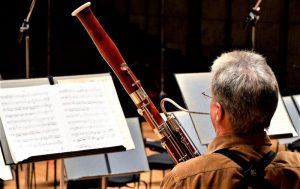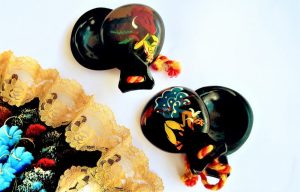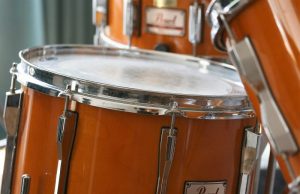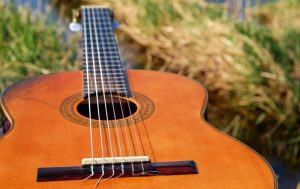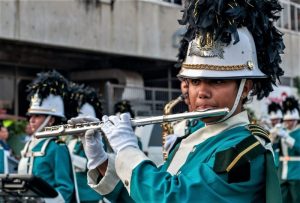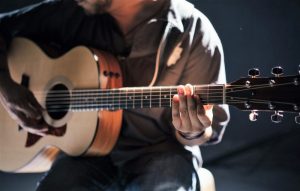Bassoon
The bassoon is a musical instrument that belongs to the woodwind family as it is played by blowing. It is made of wood and has a double reed mouth. In order to play different notes, you must cover the holes with your fingers or tighten the metal keys. It is considered the largest instrument in the woodwind section and therefore has the ability to produce the lowest notes. The bassoons in the orchestra are usually located behind the oboes and next to the clarinets.
What is the bassoon?
Known in the musical field as the "clown of the orchestra", it is a double reed instrument that has the capacity to produce solemn and gentle sounds and that belongs to the family of woodwind musical instruments, being the largest of them.
Characteristics of the bassoon
The main characteristics of the bassoon are the following:
- It has a conical tube that bends over itself.
- It is the lowest of the woodwind family and the most serious of the wind family.
- It is placed transversally, so that the bell is upwards and the pavilion above its head.
- It is not a transpositor, so the note that sounds is the same that the performer reads in the score.
- It has a sonorous extension of three and a half octaves, although its optimal sonorous register includes the three octaves.
- Notes are obtained by combining open or closed holes.
- The sound is produced by breathing air into the double reed
- It has a somewhat sad, but rich timbre.
- The bass sounds are pasty and powerful, and the trebles are ideal for playing solos and in combination with the flutes.
- In the symphony orchestra they are located at the back of the woodwind
History
The bassoon was born throughout the seventeenth century, although there are records that say that from the middle of the previous century there was an instrument from which it was derived, and which was known as the dulcian. It had great fame in the ecclesiastical musical circles and courtiers. The dulcian evolved to give shape to the bassoon, which has also undergone some changes, such as the adoption of metal keys that allowed to open or plug mechanically the fingering holes.
When it was invented, it was used to reinforce the bass line in instrumental ensembles, although it did not enjoy recognition as a soloist. In the second half of the 17th century, he joined the orchestra, and since then he has appeared regularly. In the 18th century, he began to abandon his role as a bass player and began as a solo instrument. During the Romantic era, numerous builders tried to improve the sound qualities of the bassoon, but the technical problems were not solved until the 1820s, with Carl Armenraeder and Johann Haeckel.
Who invented it?
There are many hypotheses about the creation of this musical instrument, although most of them are attributed to a canon of Ferrara, Afranio Teseo, who is said to have found his inspiration in a Serbo-Croatian specimen, similar to the bagpipe, fed by lateral bellows.
Types of bassoon
There are two differentiated bassoon models, the German and the French which, although they share the basic characteristics, present some differences. They can also be classified as:
- The contra bassoon, which is an octave lower than the bassoon, is serious and deep.
- The tenoroon is shorter, smaller and lighter than the conventional bassoon and is used for the initiation to the bassoon of small children.
Parts
The main parts are the bell, which finishes off the instrument, the grave body, the buttock, which is the lower part of the instrument and the place where the tube changes direction by means of a metallic elbow, the piece of the tunnel, which is the place where the tudel is inserted, and which is known as the central body of the tenor, the tudel and the reed.
What is it used for?
The bassoon is an instrument widely used to produce a series of comic effects and solemn and gentle sounds in musical scores. It is especially effective in the production of short notes and pecks better known as staccato. It is also important to emphasize its ability to couple with other instruments, particularly with other woods and with the horns.
How to play the bassoon
In order to play the bassoon it is very important to have a good knee position, mainly to hold it. Another important aspect is the strength of the abdomen because that is where we center the air we are going to use to play the bassoon.
The position of the shoulders, neck and back should be adequate to help the air come out with more speed keeping the body in a natural state. The lips should work synchronously with the tongue to strengthen the internal resonator, making it sound much cleaner. The air that is emitted should maintain a speed and should be ceaseless.
It should be played sitting down as it is a very heavy instrument. The bassoon is placed on the right side of the musician, with the left hand on the keys above and the right hand on the bottom of the instrument.
Featured interpreters
Among the interpreters who stand out in the practice of this instrument we can mention a:
- Gustavo Núñez: who is considered one of the best bassoon players of his generation.
- Klaus Thunemann: has been the main bassoon of the North German Symphony Orchestra. He was the only winner of the bassoon section at the German Radio Competition in Munich in 1965.
- Milan Turkovic: Austrian bassoon player known internationally for his solo career. He is a member of the ensemble “Wien-Berlin”.
- Sergio Azzolini: Italian bassoonist and conductor.
- Enrique Abargues: bassoon soloist with the National Orchestra of Spain and since 1982, professor of the same.
How to cite this article?
Briceño V., Gabriela. (2019). Bassoon. Recovered on 23 February, 2024, de Euston96: https://www.euston96.com/en/bassoon/
